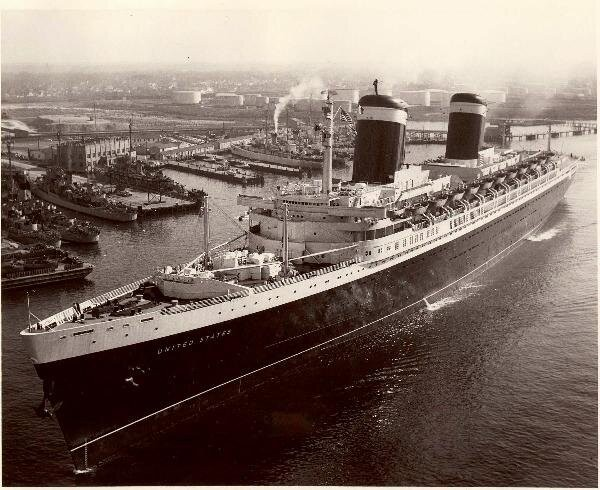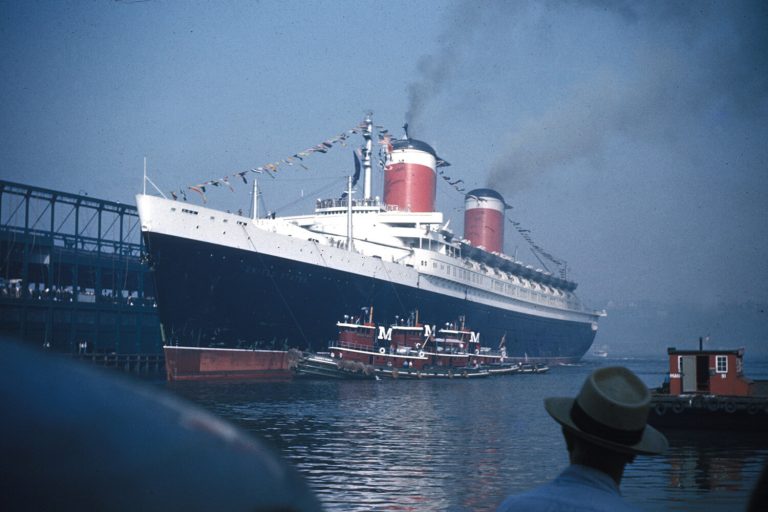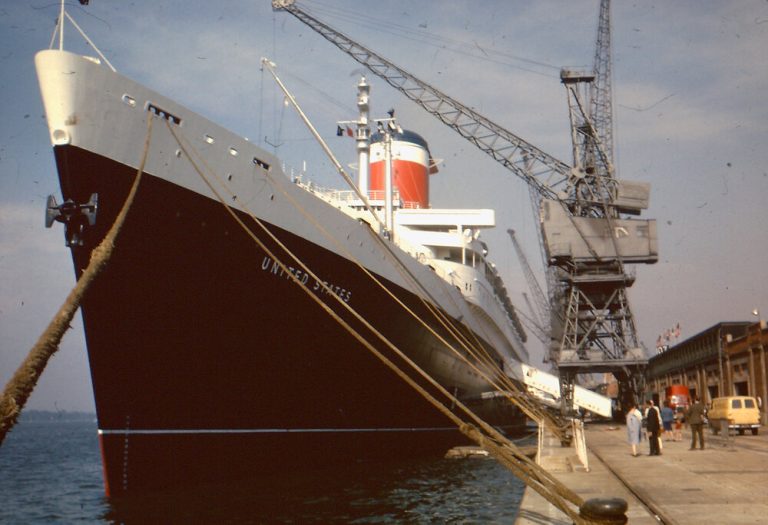United States: A sad destiny at the bottom of the sea
The SS United States Conservancy has transferred ownership of the ocean liner United States to Okaloosa County, and immediately afterward, preparations began to move the ship from its current mooring.
Thus begins the final chapter in the history of this record-breaking ship, which will end its career at the bottom of the sea, becoming the largest artificial coral reef: a sad conclusion for all ship enthusiasts who saw this vessel as an icon of transatlantic travel from a bygone era.
SS United States
Why was the United States so important? Because it represented the pride of the U.S. merchant navy, the last winner of the Blue Riband at the extraordinary speed of 35.59 knots (about 66 km/h) on the route to Europe and back. Its turbines generated an astonishing 248,000 horsepower, and during sea trials, it even reached 44 knots, making it an ideal troop transport for the U.S. during the Cold War. It could be converted for military purposes, with the ability to carry 15,000 soldiers on board.
There were several plans to convert it into a cruise ship, but unfortunately, none of them came to fruition. The most recent was a proposal by Crystal Cruises when the company was part of the Genting Hong Kong group in 2016. Previously, Norwegian Cruise Line had bought the ship to return it to service under the colors of its subsidiary NCL America, a brand that later disappeared from the global cruise scene, along with the restoration project, leaving the liner to rot in Philadelphia. In 2011, NCL transferred the ship to the “SS United States Conservancy,” which, now unable to cover management and mooring costs, after a lengthy legal dispute with the pier owner, was forced to choose the painful path of controlled sinking for the ship.
In fact, the transfer of ownership is part of a mediation agreement ordered by the court, which effectively ended over two years of litigation initiated by Penn Warehousing, the operator of the pier where the ship, which entered service in 1952, is currently docked in Philadelphia.
Faced with an eviction notice, the Conservancy was supposed to move the ship from its mooring by mid-September, but this did not happen. “The court order left us with a very short window to find an alternative location for the ship. In fact, we had started our search well before Penn Warehousing filed a lawsuit against the Conservancy in early 2022,” stated the foundation.
SS United States
“Unfortunately, after years of contact with private dock owners, government agencies, elected officials, and public authorities at the local, state, and federal levels, we were unable to find a suitable and available site within the time frame set by the court.” Various entities that had submitted proposals to buy and relocate the ship were carefully considered. “None of these recent prospects met the minimum due diligence requirements or proved feasible within our current time and logistical constraints.” Given this context, the Conservancy had no choice but to either demolish the ship or convert it into an artificial coral reef, along with the creation of a land-based museum.
After allocating over $10 million for the project, Okaloosa County will now begin preparations to sink the ship off the coast of Florida. The United States will be towed from Philadelphia to Norfolk, where, in the coming months, complex work will be done to make the hull suitable for the transformation into an artificial reef.
As part of the agreement, Okaloosa County will also support the creation of a land-based museum and visitor center, which will be designed using the latest technologies for a cutting-edge experience for visitors. The museum will also house collections of artifacts and original works of art from the ship, including at least one of the iconic funnels from the “Big U.” Additionally, there are plans for a detailed recreation of the ship’s interiors using original materials, as well as the ship’s radar mast.
SS United States
But today, what remains inside? Very little. The ship has become a rusted skeleton. After being decommissioned in 1969, its original furnishings were removed in 1984, and in 1992, it was towed to Ukraine for the removal of all asbestos on board. These efforts reduced it to an empty shell, and the incredible engine system now only consists of decayed pipes. The regret remains, however, that the United States did not manage to preserve its most iconic passenger ship, unlike what has been done with several ships of the U.S. Navy. Unfortunately, we have reached the final word in the story of the United States, and we can only hope that its memory will at least be preserved.
Don’t miss the latest news, updates, and information from the world of cruises on Cruising Journal, featuring photos, videos, and cruise deals.



